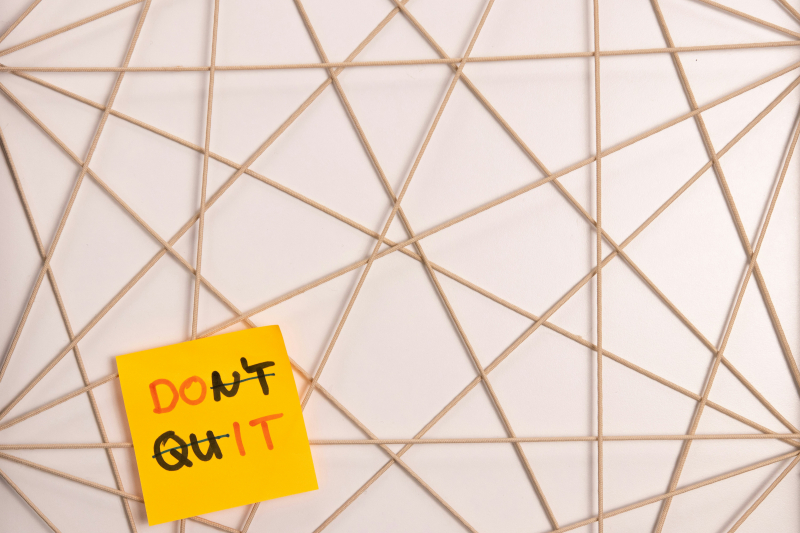Eat that frog (start with the hardest task)
The principle: by starting with your hardest, most revolting task (those tend to be important, too), you’ll have laid the groundwork for a peaceful day of easy to-dos. Bonus: feel like a champion all day! The method is described in the eponymous book.
My experience: if the task can be accomplished in a day (or a single sitting), this is the perfect strategy. Once you do it, you catch a “nothing-can-beat-me” high and truly flow through the rest. So, for this to work, make sure to make the task manageable: not “Write chapter 1 of my thesis”, but “Finish the first paragraph.” Also, it’s better to have only one such big challenge a day, if possible, or at least to have challenges that target different skills, so as not to exhaust yourself.
Start with the smallest task
The principle: start with a necessary but easy task to build up your confidence and proceed to harder problems.
My experience: Unlike eat that frog, this approach is perfect for days when you just lack self-esteem or energy; when you simply can't seem to muster the courage to tackle something big. Works brilliantly in combination with the “done” list: let smaller accomplishments pile up while you build momentum as you move through the day.
The nothing alternative
The principle: set for yourself a block of time when you can’t do anything but the task at hand. You can’t read a book, go on social media, or reply to emails. You can only do that one task.
My experience: even though the mechanics require some preparation (like tweaking your Focus settings to block access to certain apps or websites, or notifying your friends you’ll be unreachable for a while), it feels fun. For some reason, it made me imagine myself as a writer isolating themselves in the woods to work on the next masterpiece. This drama only adds to the charm, taking the focus off the complexity of the task at hand and making starting feel easy-breezy.
The 2-minute rule
The principle: any new habit should only take 2 minutes or less to execute. The key is to make the task so simple “that you can’t say no,” as James Clear, the author of Atomic Habits, puts it.
My experience: the hardest part for me was to actually allow myself to track 2-minute habits – I failed at this miserably, settling for 15-minute ones instead. For people with high expectations of themselves, this could be a great exercise in lowering them. I believe it could be a fun challenge to try and keep any new habit at just two minutes per day for the first week; by week two you’ll want to keep going further just to know how it feels!
Pro-level advice
Adjust your environment (eliminate the decisions)
The principle: another tip from James Clear is to build systems that will make it easier for you to follow through on your habit than not to do it. The easiest example is: if you want to exercise first thing in the morning, leave your gym gear by the bed – so that it’s easier to put it on and exercise (for two minutes at first!). This requires some trial and error, as well as some strategic thinking.
My experience: I’d say with this one, it’s best to give yourself some grace and patience. It’s unlikely that you will find a way to create that perfect focus-inducing environment on your first try. You might think that putting your phone in your desk drawer is a step towards productivity – only to find out it triggers anxiety, not productive flow. I keep looking for a way to optimize my environment for at-home studies and so far haven’t found the perfect recipe, but I trust the process. This approach promises great results with less stress and I can’t wait to experience it.
Build the transition muscle
The principle: it’s the transition stage between tasks that’s hard and as you build your ability to start, it will get easier and easier to just do it. In this Harvard Business Review article, the author describes each step you need to do to get used to starting things: essentially, you set a task, you prime yourself for the fact that it’s going to be hard at first and you’ll meet some resistance, and then you just plunge right in. The final step is: “Repeat every day.”
My experience: in the article, the author alludes to taking a cold bath and I second that: my training ground for the transition muscle is the swimming pool. Every time before my training session begins, there is the dreaded moment of getting into the cold water. The anticipation makes it worse every time and the less I hesitate, the sooner I can put it behind me. After a while, I noticed that this is a true soft skill: I can rely on it when starting any task, not just a swimming session – it works! If you have some way of practicing this “plunging,” I can’t recommend it enough.
Work with self-compassion and self-forgiveness
The principle: apparently, studies show that a more compassionate attitude towards yourself can curtail procrastination in a fundamental way. Once you recognize your flaws and forgive yourself, you can move forward with renewed energy.
My experience: so far, I can’t really report anything: this is level impossible for me, but I am ready to believe that this approach can truly be life-changing. Luckily, we already had an ITMO expert share tips on dealing with the inner critic, so I know what steps to take in this direction.
Interested in self-improvement and self-care? Head to our article on dealing with burnout, upgrading your life with healthy foods, and more here.




